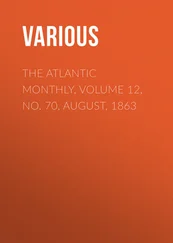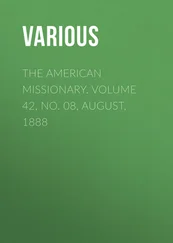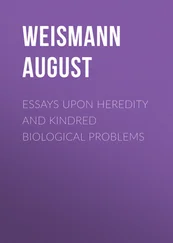August Weismann - Studies in the Theory of Descent, Volume I
Здесь есть возможность читать онлайн «August Weismann - Studies in the Theory of Descent, Volume I» — ознакомительный отрывок электронной книги совершенно бесплатно, а после прочтения отрывка купить полную версию. В некоторых случаях можно слушать аудио, скачать через торрент в формате fb2 и присутствует краткое содержание. Жанр: foreign_antique, foreign_prose, на английском языке. Описание произведения, (предисловие) а так же отзывы посетителей доступны на портале библиотеки ЛибКат.
- Название:Studies in the Theory of Descent, Volume I
- Автор:
- Жанр:
- Год:неизвестен
- ISBN:нет данных
- Рейтинг книги:4 / 5. Голосов: 1
-
Избранное:Добавить в избранное
- Отзывы:
-
Ваша оценка:
- 80
- 1
- 2
- 3
- 4
- 5
Studies in the Theory of Descent, Volume I: краткое содержание, описание и аннотация
Предлагаем к чтению аннотацию, описание, краткое содержание или предисловие (зависит от того, что написал сам автор книги «Studies in the Theory of Descent, Volume I»). Если вы не нашли необходимую информацию о книге — напишите в комментариях, мы постараемся отыскать её.
Studies in the Theory of Descent, Volume I — читать онлайн ознакомительный отрывок
Ниже представлен текст книги, разбитый по страницам. Система сохранения места последней прочитанной страницы, позволяет с удобством читать онлайн бесплатно книгу «Studies in the Theory of Descent, Volume I», без необходимости каждый раз заново искать на чём Вы остановились. Поставьте закладку, и сможете в любой момент перейти на страницу, на которой закончили чтение.
Интервал:
Закладка:
Very analogous is the case of Euchloe Belia , a butterfly likewise belonging to the Pierinæ , which extends from the Mediterranean countries to the middle of France, and everywhere manifests a very sharply pronounced seasonal dimorphism. Its summer form was, until quite recently, described as a distinct species, E. Ausonia . Staudinger was the first to prove by breeding that the supposed two species were genetically related. 25This species, in addition to being found in the countries named, occurs also at a little spot in the Alps in the neighbourhood of the Simplon Pass. Owing to the short summer of the Alpine climate the species has in this locality but one annual brood, which bears the characters of the winter form, modified in all cases by the coarser thickly scattered hairs of the body (peculiar to many Alpine butterflies,) and some other slight differences. The var. Simplonia is thus in the Alps a simple climatic variety, whilst in the plains of Spain and the South of France it appears as the winter form of a seasonally dimorphic species.
This Euchloe var. Simplonia obviously corresponds to the var. Bryoniæ of Pieris Napi , and it is highly probable that this form of E. Belia must likewise be regarded as the parent-form of the species surviving from the glacial epoch, although it cannot be asserted, as can be done in the case of Bryoniæ , that the type has undergone no change since that epoch, for Bryoniæ from Lapland is identical with the Alpine form, 26whilst E. Simplonia does not appear to occur in Polar countries.
Very interesting also is the case of Polyommatus Phlæas , Linn., one of our commonest Lycænidæ , which has a very wide distribution, extending from Lapland to Spain and Sicily. 27If we compare specimens of this beautiful copper-coloured butterfly from Lapland with those from Germany, no constant difference can be detected; the insect has, however, but one annual generation in Lapland, whilst in Germany it is double-brooded; but the winter and summer generations resemble each other completely, and specimens which had been caught in spring on the Ligurian coast were likewise similarly coloured to those from Sardinia. (Fig. 21, Plate II.). According to these facts we might believe this species to be extraordinarily indifferent to climatic influence; but the South European summer generation differs to a not inconsiderable extent from the winter generation just mentioned, the brilliant coppery lustre being nearly covered with a thick sprinkling of black scales. ( Plate II., Fig. 22.) The species has thus become seasonally dimorphic under the influence of the warm southern climate, although this is not the case in Germany where it also has two generations in the year. 28No one who is acquainted only with the Sardinian summer form, and not with the winter form of that place, would hesitate to regard the former as a climatic variety of our P. Phlæas ; or, conversely, the north German form as a climatic variety of the southern summer form – according as he accepts the one or the other as the primary form of the species.
Still more complex are the conditions in another species of Lycænidæ , Plebeius Agestis (= Alexis Scop.), which presents a double seasonal dimorphism. This butterfly appears in three forms; in Germany A and B alternate with each other as winter and summer forms, whilst in Italy B and C succeed each other as winter and summer forms. The form B thus occurs in both climates, appearing as the summer form in Germany and as the winter form in Italy. The German winter variety A, is entirely absent in Italy (as I know from numerous specimens which I have caught), whilst the Italian summer form, on the other hand, (var. Allous , Gerh.), does not occur in Germany. The distinctions between the three forms are sufficiently striking. The form A (Fig. 18, Plate II.) is blackish-brown on the upper side, and has in the most strongly marked specimens only a trace of narrow red spots round the borders; whilst the form B (Fig. 19, Plate II.) is ornamented with vivid red border spots; and C (Fig. 20, Plate II.) is distinguished from B by the strong yellowish-brown of the under side. If we had before us only the German winter and the Italian summer forms, we should, without doubt, regard them as climatic varieties; but they are connected by the form B, interpolated in the course of the development of both, and the two extremes thus maintain the character of mere seasonal forms.
III. Nature of the Causes producing Climatic Varieties
It has been shown that the phenomenon of seasonal dimorphism has the same proximate cause as climatic variation, viz. change of climate, and that it must be regarded as identical in nature with climatic variation, being distinguished from ordinary, or, as I have designated it, simple (monomorphic) climatic variation by the fact that, besides the new form produced by change of climate, the old form continues to exist in genetic connexion with it, so that old and new forms alternate with each other according to the season.
Two further questions now present themselves for investigation, viz. (1) by what means does change of climate induce a change in the marking and colouring of a butterfly? and (2) to what extent does the climatic action determine the nature of the change?
With regard to the former question, it must, in the first place, be decided whether the true effect of climatic change lies in the action of a high or low temperature on the organism, or whether it may not perhaps be produced by the accelerated development caused by a high temperature, and the retarded development caused by a low temperature. Other factors belonging to the category of external conditions of life which are included in the term “climate” may be disregarded, as they are of no importance in these cases. The question under consideration is difficult to decide, since, on the one hand, warmth and a short pupal period, and, on the other hand, cold and a long pupal period, are generally inseparably connected with each other; and without great caution one may easily be led into fallacies, by attributing to the influence of causes now acting that which is but the consequence of long inheritance.
When, in the case of Araschnia Levana , even in very cold summers, Prorsa , but never the Levana form, emerges, it would still be erroneous to conclude that it is only the shorter period of development of the winter generation, and not the summer warmth, which occasioned the formation of the Prorsa type. This new form of the species did not come suddenly into existence, but (as appears sufficiently from the foregoing experiments) originated in the course of many generations, during which summer warmth and a short development period were generally associated together. From the fact that the winter generation always produces Levana , even when the pupæ have not been exposed to cold but kept in a room, it would be equally erroneous to infer that the cold of winter had no influence in determining the type. In this case also the determining causes must have been in operation during innumerable generations. After the winter form of the species has become established throughout such a long period, it remains constant, even when the external influence which produced it (cold) is occasionally withdrawn.
Experiments cannot further assist us here, since we cannot observe throughout long periods of time; but there are certain observations, which to me appear decisive. When, both in Germany and Italy, we see Polyommatus Phlæas appearing in two generations, of which both the German ones are alike, whilst in Italy the summer brood is black, we cannot ascribe this fact to the influence of a shorter period of development, because this period is the same both in Germany and Italy (two annual generations), so that it can only be attributed to the higher temperature of summer.
Читать дальшеИнтервал:
Закладка:
Похожие книги на «Studies in the Theory of Descent, Volume I»
Представляем Вашему вниманию похожие книги на «Studies in the Theory of Descent, Volume I» списком для выбора. Мы отобрали схожую по названию и смыслу литературу в надежде предоставить читателям больше вариантов отыскать новые, интересные, ещё непрочитанные произведения.
Обсуждение, отзывы о книге «Studies in the Theory of Descent, Volume I» и просто собственные мнения читателей. Оставьте ваши комментарии, напишите, что Вы думаете о произведении, его смысле или главных героях. Укажите что конкретно понравилось, а что нет, и почему Вы так считаете.












